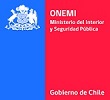BACKGROUND
The construction of strategic partnerships between the public and private sectors for strengthening resilience of nations and communities through disaster risk reduction is a priority on the agenda of Latin American and Caribbean institutions specialized in risk management. The topic is particularly relevant this year, following the recent adoption of the Sendai Framework for Disaster Risk Reduction 2015-2030 by the United Nations, which is the global benchmark in the field of comprehensive risk management.
This agenda is supported by the United Nations Office for Disaster Risk Reduction (UNISDR), through its Regional Office for the Americas, and the United Nations Office for the Coordination of Humanitarian Affairs (OCHA), with which the Permanent Secretariat has worked in close coordination and collaboration.
The issue of humanitarian aid is also one of the priorities of the Community of Latin American and Caribbean States (CELAC), which has promoted and supported the regional meetings on International Humanitarian Assistance Mechanisms (MIAH). One of the objectives of MIAH Action Plan is “to encourage strategic partnerships with the private sector”, which are coordinated by SELA.
During the Third UN World Conference on Disaster Risk Reduction (WCDRR), held in March 2015 in Sendai, Japan, participants adopted the Sendai Framework for Disaster Risk Reduction 2015-2030, stressing the need for the public and private sectors to work more closely and to create opportunities for collaboration. In addition, companies must integrate disaster risk into their management practices.
In its activities to promote public-private partnerships for natural disaster risk reduction, emphasis has been made on the need to continue strengthening cooperation and complementary relationship between both sectors, thus allowing for enhancing the capacity of society and its institutions to prevent disasters and respond to them, and, above all, to promote the construction and consolidation of resilient communities and societies.









